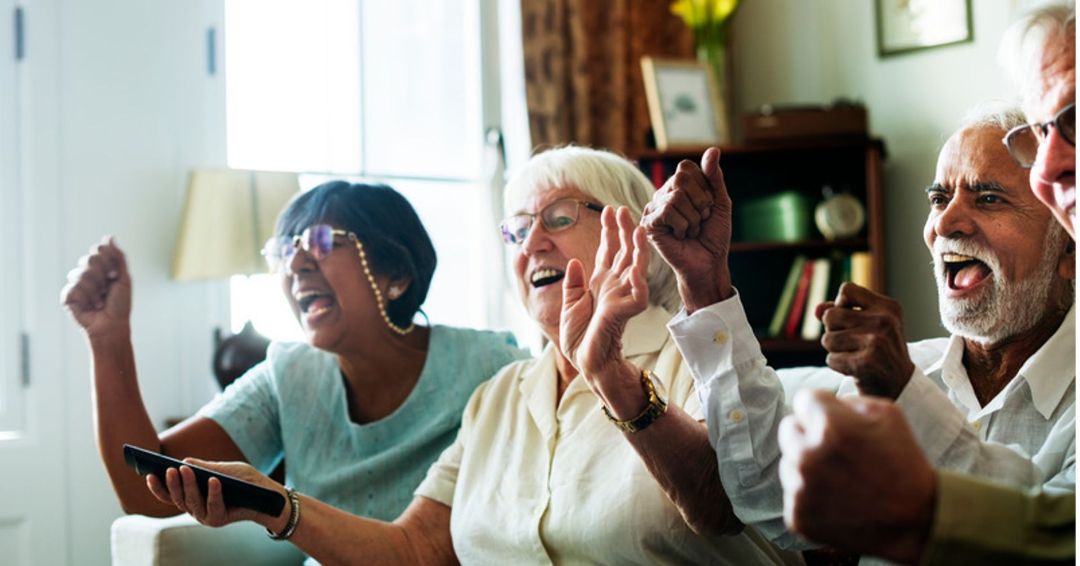Visual Branding in Assisted Living Spaces
Visual Branding in Assisted Living Spaces

Visual Branding in Assisted Living Spaces
Assisted living spaces serve a pivotal role in the continuum of care for the elderly and those
requiring daily assistance. These environments are more than just facilities; they are
homes away from home for their residents.
In crafting these spaces, every detail counts, but perhaps none so subtly influential as the
visual branding. This aspect of design goes beyond mere decoration, embedding a sense of
identity, comfort, and familiarity into the very walls that surround its inhabitants.
"A Place Called Home: Visual Branding in Assisted Living Spaces" delves into how the
strategic use of visual elements can transform assisted living facilities into warm,
welcoming communities where residents feel truly at home.
At the intersection of aesthetics and functionality lies the concept of visual branding—a
tool that extends its utility beyond the corporate world into the realms of senior living,
hospitality, and corporate settings.
Through the careful selection of colors, textures, and symbols, spaces can convey a sense
of safety, warmth, and belonging. This is particularly crucial in assisted living
environments, where the design impacts not just the physical but also the emotional and
psychological well-being of its residents.
Understanding Visual Branding
Visual branding is the art and science of infusing a space with an identity through visual
elements like color schemes, logos, typography, and imagery. It's what makes a space
instantly recognizable and distinct from others, crafting an environment that tells a story.
In the realm of assisted living, where the objective is to create spaces that feel both
comforting and familiar, the role of visual branding extends beyond mere aesthetics. It
becomes a conduit for evoking positive emotions, aiding memory, and fostering a sense of
belonging among residents.
At the heart of effective visual branding lies the understanding that every element works
together to form a cohesive narrative. This narrative is not just seen; it's felt. It reflects the
ethos of the assisted living community, mirroring its commitment to care, comfort, and
respect for its residents.
Through thoughtful design, visual branding becomes an invisible thread that connects the
residents not just to the space but to the community ethos itself.
The Significance of Visual Branding in Assisted Living Spaces
The impact of visual branding in assisted living spaces extends far beyond creating a
visually pleasing environment. It plays a crucial role in influencing the emotional well-being
of residents, oOering them a sanctuary that feels like home.
For many residents, the transition to assisted living is a significant change. A well-branded
space, with its familiar and comforting visual cues, can make this transition smoother,
reducing anxiety and fostering a sense of safety and belonging.
Creating a sense of home is perhaps the most crucial objective of visual branding in these
settings. Through the strategic use of colors, textures, and imagery that resonate with the
residents' experiences and preferences, assisted living spaces can transform from mere
facilities to warm, inviting homes.
This transformation is not just about comfort; it's about identity. It allows residents to
connect with the space on a personal level, seeing reflections of themselves and their life
stories in the surroundings.
Furthermore, distinct visual branding helps differentiate one assisted living facility from
another. In a crowded marketplace, a strong visual identity can convey a facility’s unique
philosophy and approach to care, helping families make informed decisions about where
their loved ones will be most content and well cared for.
Key Elements of Visual Branding in Assisted Living Spaces
When it comes to visual branding in assisted living spaces, several key elements come into
play, each contributing to the overall atmosphere and experience of the space.
Color Psychology: The use of color is perhaps the most immediate way to evoke specific
emotions and create a particular ambiance. Warm colors like soft yellows, gentle oranges,
and earthy reds can stimulate feelings of happiness and warmth, while cool colors like
blues and greens evoke calmness and relaxation. The choice of colors should be
intentional, aiming to create a balanced environment that supports the emotional and
physical well-being of the residents.
Imagery and Decor: The selection of imagery and decor plays a vital role in reinforcing the
feeling of home. Artwork, photographs, and decorations that reflect landscapes, scenes, or
themes familiar to the residents can help stimulate memories and conversation, promoting
a sense of connection and community. It’s about creating an environment where every
piece tells a part of the residents' collective story.
Signage and Wayfinding: In designing for assisted living spaces, the functionality of visual
elements is as important as their aesthetic appeal. Clear, easily understandable signage
and wayfinding systems not only aid in navigation but also support the independence of
residents. These elements should be designed with the residents' needs in mind,
incorporating large, readable fonts and high-contrast colors to accommodate varying
levels of visual acuity.
Implementing Visual Branding Strategies
The implementation of visual branding strategies in assisted living spaces requires a
careful, thoughtful approach that balances aesthetic appeal with the unique needs of its
residents.
Collaborating with interior designers and branding experts who have experience in
healthcare or senior living environments can ensure that the visual identity not only looks
good but is also functional and supportive of residents’ well-being.
Engaging with stakeholders is crucial in this process. Residents, their families, and staff
should have a voice in the design process, ensuring that the branding resonates on a
personal level and reflects the community's values and culture. This inclusive approach
not only enhances the sense of community but also ensures that the visual branding will be
meaningful and comforting to those who interact with it daily.
Case studies of assisted living facilities that have successfully implemented visual
branding strategies can provide valuable insights and inspiration. These examples highlight
the positive impact of thoughtful design on resident satisfaction, staff morale, and overall
facility reputation.
By studying these successes, facilities can learn how to effectively communicate their
identity and values through visual elements, creating a cohesive and inviting atmosphere
for all.
Challenges and Considerations
Implementing visual branding in assisted living spaces is not without its challenges.
Balancing aesthetics with functionality is paramount; design elements must not only be
visually appealing but also meet the practical needs of residents, many of whom may have
mobility or cognitive impairments.
Safety and accessibility should always be top priorities, with design choices enhancing,
not hindering, the user experience.
Budget constraints often pose another significant challenge. Creating a visually appealing
space requires investment, but there are creative ways to implement branding strategies
without breaking the bank. This might include focusing on high-impact areas, using coste
Oective materials, or implementing changes gradually.
Another consideration is the choice between following current design trends and opting for
timeless elements that will remain relevant and comforting over time. While it's important
for spaces to feel modern and engaging, it's equally important that they do not become
quickly dated or alienate residents with rapidly changing aesthetics.
The Future of Visual Branding in Assisted Living Spaces
As we look to the future, the role of visual branding in assisted living spaces is set to
become even more significant. Emerging trends, such as the use of technology to enhance
personalization and the incorporation of biophilic design principles, highlight the evolving
nature of design in these settings.
The integration of smart technology can offer personalized experiences for residents, while
natural elements can help create serene and healing environments.
The importance of creating a place called home through thoughtful visual branding cannot
be overstated. As the demand for assisted living facilities continues to grow, so too does
the need for spaces that offer more than just physical care.
Through visual branding, facilities can offer emotional support, a sense of community, and
a place where residents truly feel at home.
In closing, the journey to effectively implement visual branding in assisted living spaces is
both a challenge and an opportunity. It invites us to rethink the role of design in creating
supportive, engaging, and homely environments for some of the most vulnerable members
of our society.
As we move forward, the stories we choose to tell through visual branding will not only
define the physical spaces of assisted living facilities but also the experiences and
memories they foster for residents and their families.

